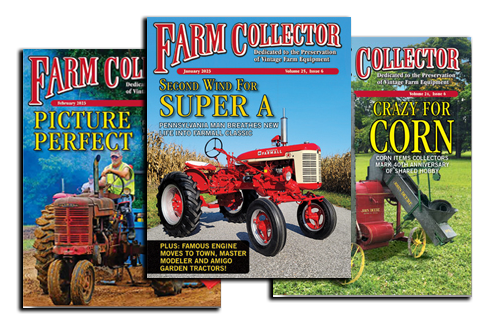Born Nov. 8, 1811, on the family farm near Groton, N.Y., David Bradley would grow up to become a leader in the American agricultural revolution. In 1832 he and his brother Christopher Columbus Bradley moved to Syracuse, N.Y., where they trained and worked in a foundry. In 1835 David moved to Chicago, Ill., where he shortly thereafter invented the steel moldboard plow, The Garden City Clipper, which was made in 200 different versions for over 100 years.
A vast number of agricultural implements and tools were made through the 19th and 20th centuries, and in 1895 the David Bradley Manufacturing Works relocated its manufacturing facility to North Kankakee, Ill., later renamed Bradley, Ill. Although purchased by Sears Roebuck & Co. in 1912, the company continued as a homogeneous entity until its sale to George Roper & Co. in 1966. The company continued to be a major force in agriculture by virtue of design, manufacture and collaboration with other leading companies of the era.
It was just after World War II that the Bradley company unveiled what was destined to become their most famous line of products, the David Bradley walk-behind, two-wheel garden tractor and its line of implements.
Over its 20-year life, 1946-1966, the David Bradley walk-behind was made in many different models, ranging from 1 HP hooded versions to 6 HP unhooded versions. Such options as reverse range, speed changer, brake, and on some models a locking differential, were offered. Over 40 different implements were offered to do every agricultural and lawn care job imaginable. Through the emerging interest in the hobby of collecting, restoring and showing antique farm equipment, David Bradley has experienced a rebirth.
Many of these little tractors continue to be used every year to put out the family garden, feeding the family and its owners. The popularity of these tractors is due in part to their versatility. They work as well, and some say better, than anything made today at several times the price. They perpetuate such fond remembrances of the ‘good old days’ that they may well be the most popular collectable garden tractors in the country.
Because of the compact size of the tractors and their implements, anyone with a pickup truck can take one and a couple of implements to show. Since so many were made, the availability of tractors and parts is still good. In fact, many parts are still available from Sears.
Collectors new to David Bradley are finding it easy to get started. Auctions and estate sales are a good source, and weekly and monthly agricultural publications are also a good place to find David Bradley equipment.
For more information on David Bradley Tractors, check out the David Bradley home page at http://members.lsol.net/GOP4EVR/. Hosted by Gary Treible, this site has a complete listing of models and implements. There’s also The David Bradley newsletter, a 20-page quarterly, which features technical information, show reports and classified ads. It can be ordered at the address shown below.
Contact David Bradley enthusiast Terry E. Strasser at: 2345 Little Georgetown Rd., Hedgesville, WV 25427, (303) 274-1725.



